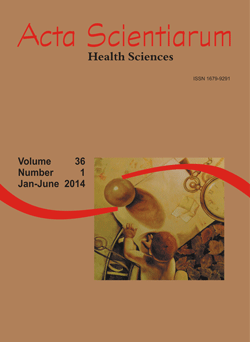<b> Is there any association between facial type and mandibular dental arch form in subjects with normal occlusion? </b>
Resumen
http://dx.doi.org/10.4025/actascihealthsci.v36i1.17668
The aim of this study was investigate the association between the mandibular arch morphology and the facial type of Brazilian Caucasians with natural normal occlusion. For this, we used a sample comprised of lateral radiographs and respective dental casts of 51 individuals (21 male and 30 female), presenting at least 4 of the 6 Andrews’ keys to normal occlusion without previous orthodontic treatment. Angle’s first molar relationship was considered indispensable for the sample. The facial type was defined by two cephalometric measurements (SN.SGn and SN.GoGn). After scanning the models (3D) and radiographs, the images were evaluated by 12 orthodontists. A modified Kappa test evaluated the agreement between examiners to classify the morphology of the dental arch. The chi-square test was used to verify the association between the facial type (dolichofacial, mesofacial, or brachyfacial) and the dental arch morphology (square, oval, or tapered), using significance level of 5%. Casual and systematic errors (p > 0.05) showed no significant results and the Kappa test showed significant agreement among examiners for the dental arch form (0.55) with a p < 0.001, considered as ‘moderate’. The chi-square test indicated no significant association. The null hypothesis was accepted, as the facial type was not associated with dental arch morphology in individuals with normal occlusion.
Descargas
DECLARAÇÃO DE ORIGINALIDADE E DIREITOS AUTORAIS
Declaro que o presente artigo é original, não tendo sido submetido à publicação em qualquer outro periódico nacional ou internacional, quer seja em parte ou em sua totalidade.
Os direitos autorais pertencem exclusivamente aos autores. Os direitos de licenciamento utilizados pelo periódico é a licença Creative Commons Attribution 4.0 (CC BY 4.0): são permitidos o acompartilhamento (cópia e distribuição do material em qualqer meio ou formato) e adaptação (remix, transformação e criação de material a partir do conteúdo assim licenciado para quaisquer fins, inclusive comerciais.
Recomenda-se a leitura desse link para maiores informações sobre o tema: fornecimento de créditos e referências de forma correta, entre outros detalhes cruciais para uso adequado do material licenciado.























5.png)







